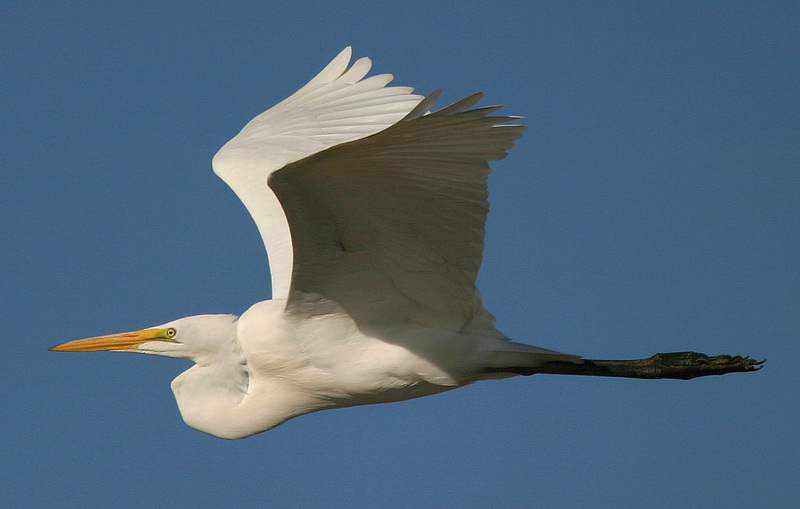|
| 질의: great white egret | 결과: 8번째/44 | |
Great Egret (Casmerodius albus) - Wiki
| 제목: | Great Egret (Casmerodius albus) - Wiki
| |

| 해상도: 1280x815
파일크기: 332318 Bytes
등록시간: 2007:01:30 01:44:44
|
Great Egret
From Wikipedia, the free encyclopedia
[Photo] Great Egret - Lovewell State Park (Kansas, USA) - 2004
The Great Egret (Casmerodius albus), also known as the Great White Egret, White Heron, or Common Egret, is a wading egret, found in most of the tropical and warmer temperate parts of the world, although it is very local in southern Europe and Asia. It is called Kotuku in New Zealand. It should not be confused with the Great White Heron, which is a white morph of the Great Blue Heron found in Florida.
The Great Egret is a large bird with all white plumage, as much as 101 cm long and weighing up to 950 g. It is only slightly smaller than the Great Blue or Grey Herons. Apart from size, the Great Egret can be distinguished from other white egrets by its yellow bill and black legs and feet. It also has a slow flight, with its neck retracted. This is characteristic of herons and bitterns, and distinguishes them from storks, cranes and spoonbills, which extend their necks.
Habits
The Great Egret feeds in shallow water or drier habitats, spearing fish, frogs or insects with its long, sharp bill. It will often wait motionless for prey, or slowly stalk its victim. It is a conspicuous species, usually easily seen.
The Great Egret is partially migratory, with northern hemisphere birds moving south from areas with cold winters. It breeds in colonies in trees close to large lakes with reed beds or other extensive wetlands. It builds a bulky stick nest. The call at breeding colonies is a loud croaking "cuk cuk cuk".
Conservation status
Although generally a very successful species with a large and expanding range, the Great Egret is highly endangered in New Zealand [1], [2]. In North America, large numbers of Great Egrets were killed around the end of the 19th century so that their plumes could be used to decorate hats. Numbers have since recovered as a result of conservation measures. Its range has expanded as far north as southern Canada. However, in some parts of the southern United States, its numbers have declined due to habitat loss. This bird has been chosen as the symbol of the National Audubon Society, which was formed in part to prevent birds from being killed for their feathers. They are Protected in Australia under the National Parks and Wildlife Act, 1974.
The Great Egret is one of the species to which the Agreement on the Conservation of African-Eurasian Migratory Waterbirds (AEWA) applies.
Taxonomy
Various authors also identify this species as Egretta alba and Casmoderius albus. However, this species closely resembles the large Ardea herons such as Grey Heron and Great Blue Heron in everything but colour, whereas it shows fewer similarities to the smaller white egrets.
There are four subspecies in various parts of the world, of which the largest is C. a. modesta.
Subspecies
C. a. modesta - Asia and Australasia.
C. a. alba - Europe
C. a. egretta - North America
C. a. melanorhynchos - Africa
Synonyms
- Ardea alba
- Egretta alba
http://en.wikipedia.org/wiki/Great_Egret
| The text in this page is based on the copyrighted Wikipedia article shown in above URL. It is used under the GNU Free Documentation License. You may redistribute it, verbatim or modified, providing that you comply with the terms of the GFDL. |
|
^o^
동물그림창고 똑똑전화 누리집
^o^
|
|